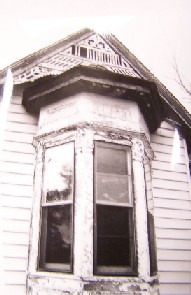Question
Have any of you used Danish Oil or something similar to finish woodwork in your home? If so, have you had to patch nail holes?
I guess my real question is, how does wood putty take Danish Oil? Does it look good? Does it look like crap? Should I use something other than wood putty, or should I not fill in the holes at all?
Please let me know. The Queen's good looks are on the line.
I guess my real question is, how does wood putty take Danish Oil? Does it look good? Does it look like crap? Should I use something other than wood putty, or should I not fill in the holes at all?
Please let me know. The Queen's good looks are on the line.



5 Comments:
I am planning to use tung oil on my kitchen's oak wainscoting. Is that the same as Danish oil? I wasn't going to fill holes with anything because I envision ugly splotches. I guess my vote would be to NOT fill them.
From the little reading I've done, Danish Oil and Tung Oil are similar in that they are oil finishes for wood. They are, however, different in their particulars. Mainly, Tung Oil is made from yung oil and most Danish Oils I've seen seem to be linseed oil based.
Use oil paints to stain the putty a little darker than the finished wood will be. Raw umber, burnt umber, raw sienna and burnt sienna are the colors to have around.You won't notice the holes then. You can also mix linseed oil with the fine sawdust from sanding the floors and some polyurethane to make a putty. It will be considerably darker than the floor but you still won't notice it.
If you want a natural look to your floors you can always use beeswax polish. I prefer shellac myself....
Gary,
Thanks. Excellent suggestions. Fortunately, I have a ton of oil paints to work with.
I have used Danish Oil for years and cannot say enough good things about it. It does however require a bit of prep work and lots of patience. It accentuates the grain of the wood, so unless it is a fine wood like Oak, Walnut or Mahogany, I stain it first to make sure it has an even base color. I have used the standard wood putty with a stain over it. For the first coat, brush it on continually until the wood will not absorb any more liquid (If its old wood, it may be awhile!) ten let it set up for about 30 minutes, and then rub the remaining oil off with a cloth. Let dry for 24 hours and then repeat. The more coats you put on the shinier it will get. I have a Mahogany Dining table that I put on 20+ coats on, and it has held up amazingly well with regular use and cleaning (I use a wet sponge and it doesn't bother the finish a bit) My mother used it for her Exterior wood door and after about 4 coats she put on a layer of varathane varnish to protect it from weather and it has held up pretty well so far. Good luck!!!
Post a Comment
<< Home